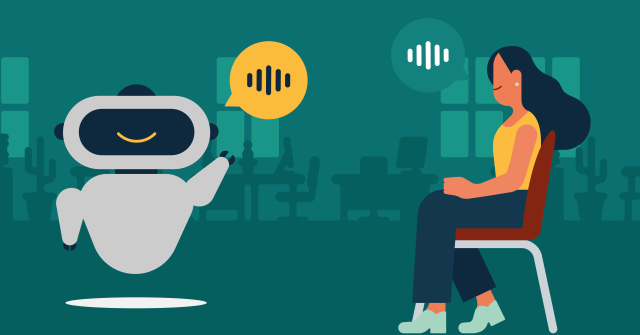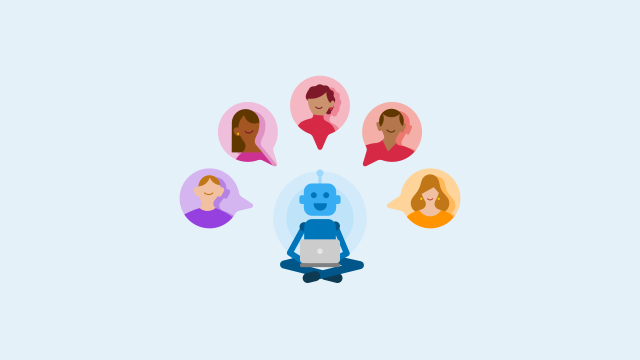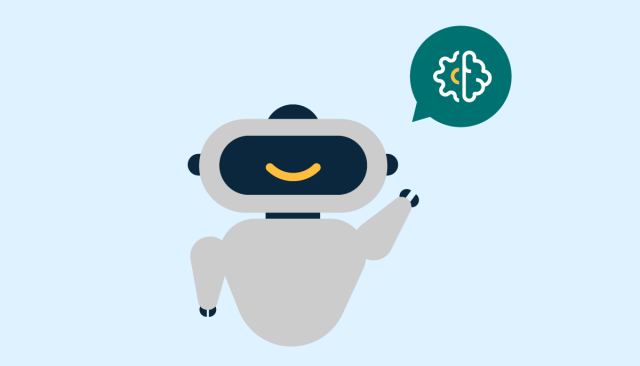Does your bot speak human? It should! Conversation designer Céline Lemonne explains why AI and linguistics should always go together.
Car dealers use them, so do educational institutions — and even governments: chatbots are becoming more popular. And while we know that we interact with bots, we still want to them to communicate with us like humans. But how do you teach your bot to “speak” human? By combining AI with linguistics!
Céline Lemonne, Conversation Designer at Sinch Chatlayer, explains how you can teach a bot to “speak” human, why customers want to talk to your bot, and how linguistics can help to create a better chatbot for your business.
Linguistics, AI, and the evolution of chatbots
Sinch Engage: Céline, what does linguistics have to do with AI and chatbots?
Céline Lemonne: When the first chatbots started coming out, they were very basic. Customers could usually only choose between pre-programmed options, like “Do you want to buy a train ticket, or do you want to talk to an agent?"
This was very similar to calling a customer service number, and then having to press “one” for tickets, and “two” to wait in line for an agent.
While this can be helpful for some use cases, most customers prefer to have natural conversations, even when talking to a chatbot. That’s when we move from a pre-programmed bot, also called a click-bot, to a conversational AI bot.
However, for a natural human-bot conversation to be possible, chatbots need to have some understanding of human language. And that’s where linguistics, the science of human languages, comes in.
Does this mean that you teach a bot to “speak” human?
In a way, yes. Basically, a chatbot needs to understand what a human wants and give a correct answer. This sounds easy but can be quite complex because people who call a company to buy a train ticket, for example, have different ways of asking for it.
Somebody could say “Give me a ticket, please”; or “I need a ticket to Rome.”; or “Where can I buy a ride from Brussels to Paris?” For a human, it’s clear that all these expressions have the same intent (“I want to buy a ticket”), but a bot has to learn that first.
So, with the help of natural language processing (NLP) and linguistics, conversational AI bots need to be trained to understand human language. And that’s just the first part.
What’s the second part?
Conversational AI bots also have to answer like a human. If we stay with the ticket example, a bot could just say: “Tickets to Rome. None available for wanted dates. Goodbye.” This would be an accurate answer, but it neither sounds natural, nor is it helpful or friendly. No human agent would ever answer like that and it can hurt the companies’ brand perception.
Rather, an agent would say something like: “I am sorry, we don’t have any more tickets available for that date. Would you be able to travel on a different day?” And that’s the type of reply that conversational AI bots can give with the help of linguistics.
💎 Find out how conversation design can improve your bot.
Best practices for companies
What other best practices should a company follow that wants to implement a bot?
First of all, it's very important that the chatbot introduces itself as a bot and tells a customer very clearly what it can do, and what not. That way, customers don’t mistakenly think they are talking to a human, and they know exactly what to expect from a bot.
It's also vital to make sure that the bot understands when the customer wants to be transferred to a human agent.
And finally, a bot should also be able to gauge human emotions and respond accordingly. If a customer writes, for example, “This is annoying. I'm out of here!”, the bot should recognize this as frustration, and not just say: “Okay, thank you, have a nice day.”, but rather apologize and suggest transferring the customer to a human agent. The better a bot can understand and react to customers, the more satisfied they will be with the service as well.
Basically, using linguistics, conversation designers teach a bot to understand and communicate in human language...
Yes, but it’s more complex than that because depending on the country or region, there can be a lot of nuances —even within the same language. Americans and Indians, for instance, use different expressions, different spellings, and there are also different ways of interaction.
So, understanding the cultural context of your customers’ language is also a very important for conversational AI bots. And that’s not limited to culture. More generally speaking, it’s simply very important to understand who your customers are.
In what way?
Think about a conversation you might have with your grandmother about chatbots. Would you use the same language as if you were talking with an IT expert? Probably not!
The way we use language changes depending on who we talk to, and conversational AI bots need to mirror that.
And there is another aspect to it, too: the chatbot also should represent a company’s brand, so it needs to act and talk accordingly.
Let’s say a bank wants a chatbot for their customer service, then using colloquial expressions, such as “sup?” or “peace out” might not be appropriate in that context. On the other hand, if you want your bot to represent a humorous brand, the bot could use more light-hearted language.
Of course, the personality should never overshadow the functionality of a bot. After all, the most important thing is that they help the customers.
Linguistics and AI put to the test
But how can you make sure as a company that your chatbot uses the right language?
By testing it! Once you have a first chatbot, run a beta test with a few customers, and see how they respond to it. Then use that feedback to improve your bot.
By the way, this is something companies should do continuously to keep improving their bot after it goes live.
What else should a company know before launching a chatbot?
Before launching a bot, companies need to answer a few key questions first.
- What problem is the chatbot supposed to solve for your customers?
- What are the tasks that your bot will complete?
- Who are our customers?
- What should your bot’s personality and tone-of-voice be like?
- How can you create a happy flow of conversation around that?
You can only design a good chatbot, and have it say the right things, if you know exactly what your chatbot is supposed to do (and say), and who they are talking to.
Also make sure that, even after having launched your chatbot, you keep gathering and analyzing data, and testing your bot. That’s the best way to continuously improve your bot.




